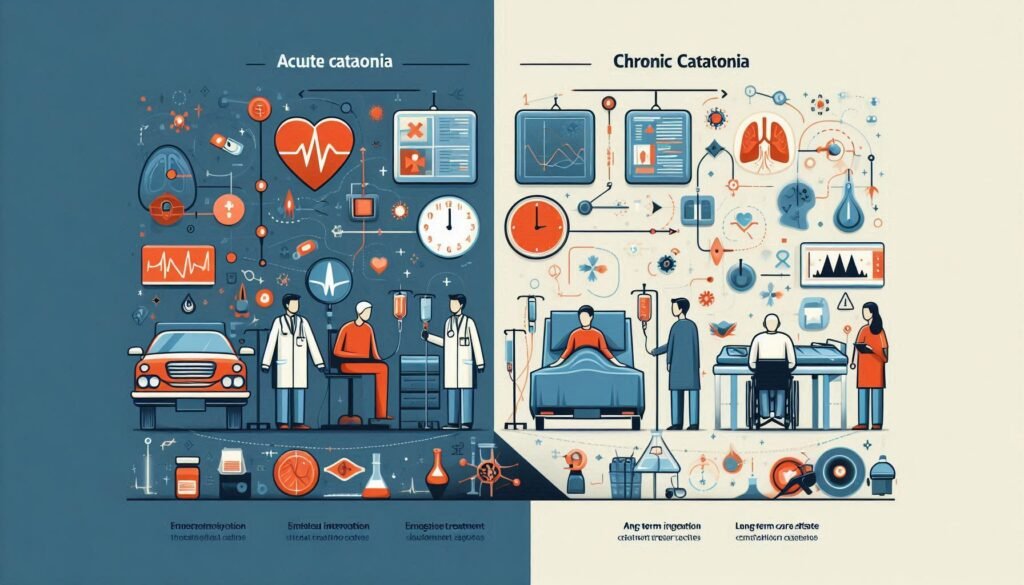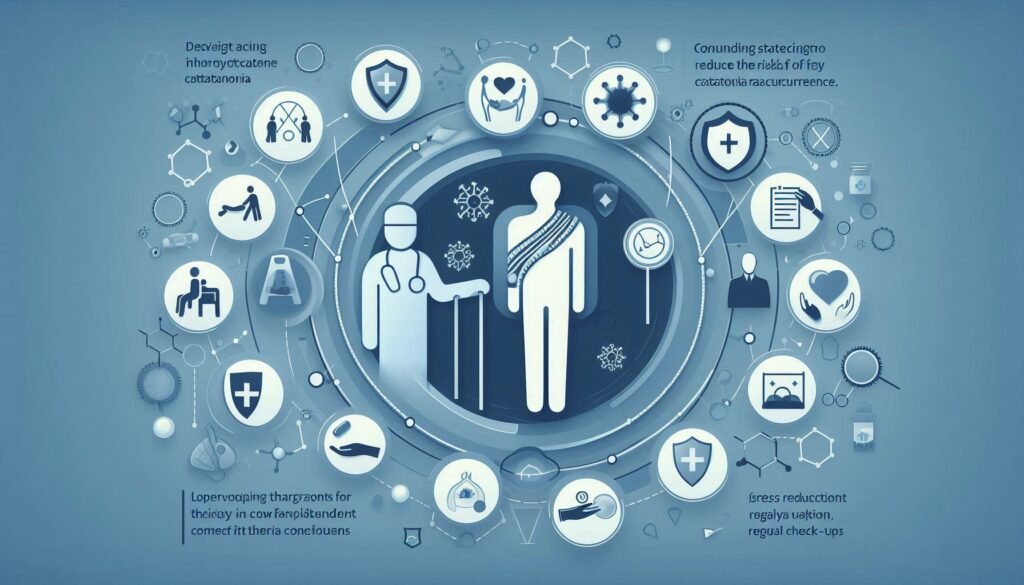Catatonia is a complex and often debilitating condition that can manifest in various ways, from immobility to extreme agitation. For many patients, finding the right treatment can be a daunting journey. One potential avenue of relief lies in antipsychotic medications, which have been used both successfully and controversially in managing catatonic symptoms. But how effective are these medications? And what risks accompany their use?
In this blog post, we will explore the role of antipsychotics in catatonia treatment—delving into their benefits, potential risks, and everything in between. With an understanding of the nuances involved, caregivers and healthcare professionals can make more informed decisions for those affected by this challenging condition. Join us as we navigate through the complexities surrounding antipsychotics and catatonia treatment!

Understanding the Complex Relationship Between Antipsychotics and Catatonia
The relationship between antipsychotics and catatonia is multifaceted and often misunderstood. Catatonia can occur in various psychiatric disorders, including schizophrenia, mood disorders, and autism spectrum disorders. This makes treatment approaches challenging.
Antipsychotics are primarily designed to manage symptoms of psychosis, such as hallucinations or delusions. However, their role in addressing catatonic symptoms has sparked debate among clinicians. Some studies suggest that these medications may help alleviate certain features of catatonia.
Yet not all patients respond positively to antipsychotics; some may experience worsening symptoms instead. Understanding the underlying cause of catatonia is crucial for determining appropriate treatment options. Factors like duration of illness and patient history play a significant role in treatment efficacy.
A deeper understanding of this complex interaction helps guide healthcare providers in making informed decisions regarding antipsychotic use for patients with catatonia. Each case requires careful evaluation to ensure the best possible outcomes for those affected by this condition.
Types of Antipsychotics Used in Catatonia: First-Generation vs. Second-Generation
Antipsychotics are classified into two main categories: first-generation and second-generation. First-generation antipsychotics, also known as typical antipsychotics, have been used since the 1950s. Medications like haloperidol and chlorpromazine fall under this category. These drugs primarily target dopamine receptors in the brain but can lead to significant side effects.
Second-generation antipsychotics, or atypical antipsychotics, emerged later with a broader mechanism of action. Examples include risperidone, quetiapine, and aripiprazole. These medications often address both dopamine and serotonin pathways, resulting in potentially fewer extrapyramidal symptoms compared to their predecessors.
When treating catatonia, clinicians sometimes favor atypical agents due to their improved safety profile. However, first-generation antipsychotics may still be effective for certain patients who respond better to them based on individual circumstances.
The choice between these medication types depends on various factors such as symptom severity and patient history. Understanding these distinctions is crucial for tailoring treatment strategies effectively in catatonic patients.
Mechanism of Action: How Antipsychotics May Affect Catatonic Symptoms
Antipsychotics primarily work by modulating neurotransmitter activity in the brain, particularly dopamine. This modulation is crucial as catatonia can be linked to dysregulation of dopaminergic pathways. By blocking specific dopamine receptors, these medications may help alleviate certain symptoms associated with catatonia.
Additionally, antipsychotics can influence other neurotransmitters such as serotonin and glutamate. This broader action may provide a more balanced approach to addressing the complex nature of catatonic states. The ability to target multiple systems could enhance treatment efficacy in some patients.
Moreover, differing generations of antipsychotics exhibit unique mechanisms. First-generation agents mainly focus on dopamine antagonism, while second-generation options offer a more diverse receptor profile. This distinction allows for tailored treatment plans based on individual patient needs and responses.
Understanding these mechanisms is essential for clinicians aiming to optimize therapeutic interventions. It aids in predicting which patients might benefit from antipsychotic therapy while managing potential risks effectively.
Potential Benefits: Cases Where Antipsychotics Can Improve Catatonia
Antipsychotics can play a crucial role in alleviating catatonia symptoms, especially when traditional treatments fall short. Many patients experience significant improvement after initiating antipsychotic therapy. This is particularly true for those whose catatonic states are linked to underlying psychiatric conditions, such as schizophrenia or bipolar disorder.
In cases where patients exhibit features like mutism or stupor, antipsychotics may help restore communication and engagement with the environment. Clinicians often observe that administering these medications leads to faster recovery rates compared to non-pharmacological approaches alone.
Certain studies indicate that second-generation antipsychotics might be more effective due to their favorable side effect profiles and ability to target multiple neurotransmitter systems. Some patients respond remarkably well, regaining functionality and quality of life within days or weeks of treatment initiation.
Additionally, using antipsychotics in conjunction with supportive therapies can enhance overall outcomes for individuals grappling with severe catatonia. Tailoring the approach based on individual needs can lead to transformative results.
Risks and Side Effects: Weighing the Potential for Harm in Catatonia Treatment
Antipsychotics can provide relief for some symptoms of catatonia, but they also come with potential risks and side effects that must be carefully considered. Common side effects include sedation, weight gain, and metabolic changes. These can significantly impact a patient’s overall health and quality of life.
Another concern is the risk of extrapyramidal symptoms (EPS), which may manifest as tremors, rigidity, or restlessness. Such reactions can complicate the treatment course and lead to further distress for patients already experiencing severe symptoms.
Patients with pre-existing medical conditions may face heightened risks when using antipsychotics. Heart issues or neurological disorders could worsen due to these medications’ adverse effects.
Monitoring is critical during treatment; healthcare providers must balance potential benefits against harm. Regular assessments help ensure that any emerging complications are promptly addressed while optimizing therapeutic outcomes in catatonic patients.
Antipsychotic-Induced Catatonia: A Paradoxical Effect to Consider
Antipsychotics are often seen as a primary treatment for catatonia, but they can paradoxically induce symptoms of this condition. This phenomenon raises important concerns for clinicians and patients alike. While designed to alleviate psychotic symptoms, certain antipsychotics may trigger or worsen catatonic states in vulnerable individuals.
The mechanism behind antipsychotic-induced catatonia isn’t fully understood. It’s thought that the dopaminergic blockade these medications produce could disrupt normal motor function in some patients. As a result, rather than facilitating recovery, the medication might lead to increased rigidity or immobility.
This risk is especially pertinent with first-generation antipsychotics. Their higher propensity for causing extrapyramidal side effects makes careful monitoring essential when treating patients diagnosed with catatonia. Balancing therapeutic benefits against potential adverse reactions becomes critical in managing such complex cases.
Recognizing signs of worsening catatonic behavior is vital. Early intervention can help mitigate complications associated with this unexpected response to treatment options, ensuring patient safety and well-being remain paramount.
Dosing Strategies: Optimizing Antipsychotic Use in Catatonic Patients
Dosing strategies for antipsychotics in catatonic patients require careful consideration. Each individual’s response can vary significantly, making personalization crucial. Start with a low dose to gauge the patient’s sensitivity and tolerability. This approach minimizes potential side effects while allowing clinicians to observe any positive changes.
Gradually increasing the dosage can be beneficial if initial responses are favorable. Regular monitoring is vital during this phase to ensure safety and efficacy. Adjustments may be needed based on observed behaviors or side effects that arise throughout treatment.
Timing also plays an important role in dosing strategies. Administering medications at consistent times each day can enhance therapeutic outcomes and improve adherence rates among patients who might struggle with routine.
Collaboration with specialists familiar with catatonia enhances the optimization process. Their insights can guide appropriate adjustments based on clinical observations, ensuring that dosing remains effective while prioritizing patient safety throughout treatment.
Combining Antipsychotics with Other Treatments: Synergistic Approaches
Combining antipsychotics with other treatment modalities can enhance the management of catatonia. This approach recognizes that a multifaceted strategy may yield better outcomes than monotherapy alone. By integrating different therapeutic options, clinicians can address various aspects of the disorder.
Psychotherapeutic interventions, such as cognitive-behavioral therapy (CBT), can be valuable adjuncts. They help patients develop coping strategies and improve their overall mental health while antipsychotics target specific symptoms. Additionally, supportive therapies like occupational or recreational therapy promote engagement and social interaction.
In some cases, electroconvulsive therapy (ECT) has shown effectiveness in treating severe catatonia alongside pharmacological treatments. ECT is particularly useful for patients resistant to standard medications, offering rapid symptom relief when needed most.
Nutritional support and hydration also play crucial roles in stabilization during acute episodes. Ensuring that patients receive adequate nutrition and fluids contributes to overall well-being while undergoing treatment for catatonia.
Monitoring and Managing Antipsychotic Treatment in Catatonia
Monitoring antipsychotic treatment in catatonia is crucial for patient safety and effective management. Regular assessments help clinicians gauge the patient’s response to medication, track symptom changes, and identify any emerging side effects. This ongoing evaluation ensures that the treatment plan remains dynamic and responsive to individual needs.
Healthcare providers should establish a baseline of vital signs, mental status, and overall health before initiating antipsychotics. Frequent follow-ups are essential during the initial stages of treatment when risks of adverse reactions may be heightened.
Adjustments to dosage or medication type might be necessary depending on how well symptoms respond over time. Close observation can prevent potential complications associated with both catatonia and antipsychotic use.
Incorporating family observations into monitoring efforts can provide valuable insight into behavioral changes at home, further assisting medical professionals in fine-tuning their approach. Effective communication between patients, families, and healthcare teams fosters an environment conducive to optimal recovery outcomes.
Future Directions: Research on Novel Antipsychotics for Catatonia
The landscape of catatonia treatment is evolving, with ongoing research focused on developing novel antipsychotics tailored for this condition. Traditional medications have shown mixed results in addressing catatonic symptoms, prompting the need for innovative therapies. Current studies are exploring compounds that specifically target neurotransmitter systems implicated in catatonia.
Researchers are also investigating how genetic and biochemical markers can guide treatment decisions. Personalized medicine approaches might allow clinicians to identify which patients will benefit most from specific antipsychotic treatments.
Additionally, there’s growing interest in combining antipsychotics with other therapeutic modalities, such as ketamine or electroconvulsive therapy (ECT). This multidisciplinary approach may enhance efficacy while reducing side effects.
As more clinical trials emerge, they could pave the way for safer and more effective options for those suffering from catatonia. By focusing on advanced pharmacological strategies and combination therapies, the future looks promising for improving outcomes in this challenging area of mental health care.


